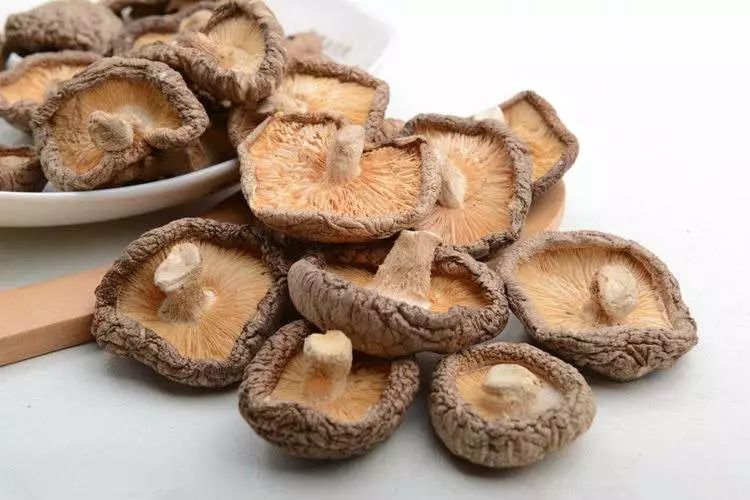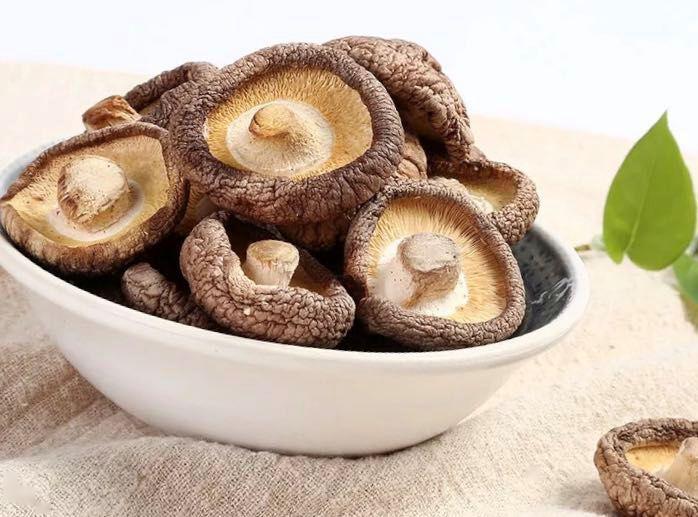
Why Fresh and Dried Offer Surprisingly Similar Nutritional Bounty
2025-06-05 00:39Mushrooms, those enigmatic denizens of the forest floor, have captivated human palates and kitchens for millennia. Their popularity continues to surge, fueled by culinary versatility and a growing awareness of their nutritional potential. Yet, a persistent debate lingers: are vibrant, plump fresh mushrooms inherently superior nutritionally to their shrunken, concentrated dried counterparts? The common assumption often leans towards "fresh is best." However, a closer examination of the science and practicalities surrounding mushroom consumption reveals a fascinating paradox: the nutritional differences between fresh and dried mushrooms are remarkably minor, often overshadowed by considerations of availability, preparation, and culinary application. Both forms deserve a place of nutritional respect on the plate.

Demystifying Water: The Core Difference (and Its Illusion)
The most glaring difference is starkly visible: water content. Fresh mushrooms typically consist of a staggering 80-95% water. This inherent juiciness contributes to their texture and volume. Drying removes the vast majority of this moisture (typically down to 10-15% water content), shrinking the mushroom dramatically and concentrating the remaining components. At first glance, this seems to imply a massive nutritional dilution in fresh mushrooms. However, nutrition is rarely assessed purely by volume; it’s measured by weight, specifically dry weight. When we compare equal dry weights of fresh and dried mushrooms, the picture becomes strikingly different.

Imagine dehydrating 100 grams of fresh mushrooms. You’d be left with about 10-15 grams of dried product. Those 10-15 dried grams contain all the nutrients (minus some volatile components) originally present in the 100 fresh grams. While eating 100g fresh provides a larger volume with significant water, eating just 10-15g rehydrated dried mushrooms (which roughly swells back to 100g) provides a nutritionally equivalent payload.
Nutrient Spotlight: Where the Differences Fade
Let’s break down the key nutritional aspects where fresh and dried mushrooms reveal their fundamental similarity:
Macronutrients (Protein, Carbs, Fiber):
Fresh: Provide modest amounts per 100g serving (due to high water weight).
Dried: Appear very high in protein, carbohydrates (including fiber like chitin and beta-glucans), and overall calories per 100g. However, per gram of dry matter, they are essentially identical to fresh mushrooms. The concentration effect makes dried mushrooms an incredibly efficient source of fiber and protein per gram consumed once rehydrated. A handful of dried mushrooms in a soup or stew delivers the same fiber and protein punch as eating multiple fresh mushrooms.
Minerals (Potassium, Selenium, Copper, Phosphorus):
Minerals are remarkably stable during drying. They do not volatilize or break down significantly at standard drying temperatures.
Fresh mushrooms offer minerals diluted in water. Dried mushrooms offer highly concentrated minerals per gram. Crucially, rehydrated dried mushrooms consumed in a typical portion size provide mineral levels equivalent to or exceeding those found in a serving of fresh mushrooms. Studies consistently show excellent retention of minerals like potassium (crucial for heart health) and selenium (a powerful antioxidant) after dehydration. The bioavailability – how well our bodies absorb these minerals – shows no significant disadvantage for the dried form.

Vitamins – The Nuanced Story:
Vitamin D2 (Ergocalciferol): This is where dried mushrooms often have a surprising advantage. Fresh mushrooms contain ergosterol, a precursor to Vitamin D2. When exposed to sunlight or UV light (either naturally while growing or artificially during/post-drying), ergosterol converts to bioactive Vitamin D2. Drying often involves sun exposure or commercial UV treatment. Consequently, many dried mushrooms (especially sun-dried varieties like shiitake) exhibit significantly higher concentrations of Vitamin D2 than their fresh counterparts stored in the dark.
B Vitamins (Riboflavin/B2, Niacin/B3, Pantothenic Acid/B5): Water-soluble B vitamins are more vulnerable to loss during processing and cooking. Some loss occurs during the blanching process sometimes used before commercial drying to maintain color or during prolonged drying. However, levels in properly dried mushrooms remain substantial and comparable to fresh when accounted for by dry weight. Rehydrated and cooked, they contribute meaningfully to B vitamin intake.
Vitamin C & Thiamine (B1): These are the most heat and oxidation-sensitive vitamins. Fresh mushrooms contain modest amounts. Drying inevitably causes significant degradation of these particular vitamins. This is arguably the most clear-cut nutritional disadvantage for dried mushrooms. However, mushrooms are not a primary source of Vitamin C or Thiamine in most diets. Relying on citrus fruits, bell peppers, whole grains, or legumes is far more effective for these nutrients.
Other Fat-Soluble Compounds (Ergothioneine, Glutathione): Mushrooms are uniquely rich sources of the powerful antioxidant ergothioneine and glutathione. Research indicates these compounds are remarkably stable during drying and cooking at typical food preparation temperatures. Their levels remain high in both fresh and dried/rehydrated mushrooms, contributing significantly to the overall antioxidant profile.
Bioactive Compounds & Umami Power:
Mushrooms are prized for compounds like beta-glucans (immune-modulating polysaccharides) and unique amino acids contributing to umami flavour (e.g., glutamate, guanylate). Drying does not degrade beta-glucans; their concentration increases per gram. Furthermore, the drying process itself initiates enzymatic reactions that intensify the umami flavour profile. This is why dried shiitakes or porcini deliver such a powerful flavour punch compared to fresh ones. The bioactivity and flavour potential are preserved or even enhanced, not diminished.
Beyond the Lab: Practical Considerations Amplify Similarity
The nutritional comparison based purely on composition tells only part of the story. Real-world factors significantly level the playing field:
Cooking Losses Apply to Both: All cooking methods (boiling, sautéing, grilling) cause nutrient losses – vitamins leach into water, heat degrades some compounds. Fresh mushrooms aren't immune. The losses experienced by properly rehydrated dried mushrooms during cooking are comparable to losses incurred by fresh mushrooms during preparation. The "fresh advantage" diminishes further.
Convenience and Concentration: Dried mushrooms offer unparalleled shelf stability (months or even years) without refrigeration, drastically reducing food waste. Their intense flavour and concentrated nutrients mean a small amount goes a long way in enhancing dishes nutritionally and culinarily. Finely ground dried mushrooms can even be used as nutrient-rich seasoning powders.
Accessibility and Variety: Dried mushrooms make exotic or seasonal varieties (like chanterelles, morels, porcini) available year-round, globally. This increased accessibility often translates to greater dietary diversity, which is a crucial aspect of nutritional health. Choosing dried wild mushrooms can expose us to a wider array of beneficial compounds than relying solely on the limited fresh varieties available locally.
Cost Efficiency: Per portion, especially for intensely flavoured varieties, dried mushrooms are often significantly cheaper than fresh, particularly out of season or for wild types. This makes their nutritional benefits more accessible to more people.
Vitamin D: A Case for Dried
The vitamin D story deserves its own highlight. Mushrooms are one of the few significant non-animal sources of vitamin D. As mentioned, while many fresh mushrooms contain the precursor ergosterol, conversion to Vitamin D2 requires UV exposure. Mass-market fresh mushrooms are often grown and stored in darkness, containing minimal active Vitamin D2. Consumers proactively choosing Vitamin D2-rich dried mushrooms (particularly those labelled sun-dried or UV-treated), or even "sunbathing" fresh mushrooms themselves at home, can achieve significantly higher intakes. In this specific case, the dried form offers a demonstrable and easily accessible nutritional advantage.

The Verdict: A Culinary and Nutritional Partnership
To claim "no difference whatsoever" would be simplistic. Fresh mushrooms offer superior texture for salads or raw applications and contain slightly higher levels of certain volatile vitamins like C and B1. The sensory experience of eating fresh is distinct. However, when assessed on the critical metric of key nutrients – proteins, fiber, minerals, ergothioneine, beta-glucans, and often Vitamin D2 – per gram of dry matter or equivalent rehydrated portion, the differences shrink to near insignificance.
Drying is not a process of nutritional destruction, but one of preservation and concentration. The nutritional profiles of fresh and dried mushrooms are fundamentally similar, resembling two sides of the same mycological coin. The higher concentration in dried forms compensates for the water dilution in fresh forms, leading to comparable nutrient delivery in typical servings. Factors like preparation methods, seasonal availability, cost, flavour preferences, and potential Vitamin D enhancement often become far more decisive in choosing between fresh and dried than any inherent, substantial nutritional gap.
Therefore, rather than viewing fresh and dried mushrooms through a lens of hierarchy, embrace their partnership. Enjoy fresh mushrooms for their crisp texture and seasonal abundance. Utilize dried mushrooms for their intense flavour, culinary depth, shelf stability, concentrated nutrient delivery, potential Vitamin D boost, and access to a wider world of fungal varieties. Both forms deliver the unique and valuable nutritional bounty mushrooms offer, proving that this remarkable kingdom thrives equally well, nourishing us in both its hydrated and desiccated states.
